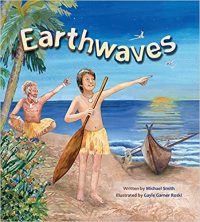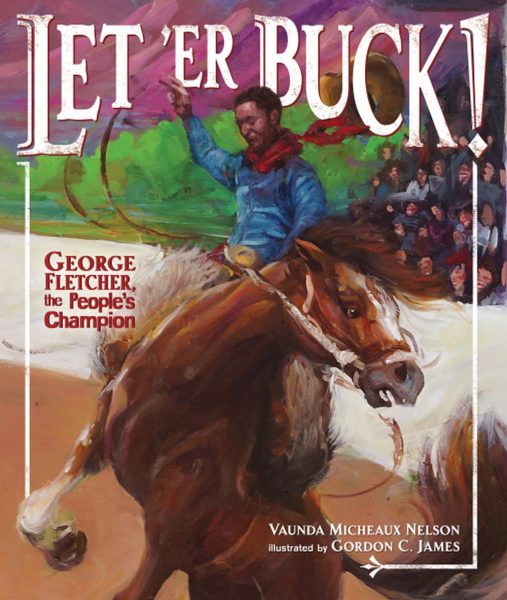
Our collection of picture books featuring Black and Indigenous people and People of Color (BIPOC) is available to the public. *Inclusion of a title in the collection DOES NOT EQUAL a recommendation.* Click here for more on book evaluation.
Find titles using a keyword search below (e.g. adoption, birthday, holidays, etc.), or by selecting one or a combination of filters on the lefthand sidebar below.
First time here? Start here!
61 matching books
Show FiltersFilter Results
-
Biography 41
-
Cross Group 18
-
Non-Fiction 61
-
Boy/Man 61
-
Girl/Woman 42
-
Jewish 1
-
Secondary 53

My Painted House, My Friendly Chicken, and Me
"Hello, Stranger-Friend" begins Maya Angelou’s story about Thandi, a South African Ndebele girl, her mischievous brother, her beloved chicken, and the astonishing mural art produced by the women of her tribe. With never-before-seen photographs of the very private Ndebele women and their paintings, this unique book shows the passing of traditions from parent to child and introduces young readers to a new culture through a new friend. -- publisher

My Name is Blessing
Based on a true story about a young Kenyan boy whose mother left him but had named him Muthini which meant suffering because he was born with no fingers on his left hand and only two on his right. Many times he was made fun of or avoided which hurt him deeply. He lives with his very elderly grandmother, his Nyanya, along with many cousins whose parents had either died or left them. They are extremely poor and there is never enough money or food, but plenty of love. A difficult choice must be made and Muthini is the youngest child and needs to have a better chance in life, so his Nyanya takes him to an orphanage where he is blessed and his name is changed to Baraka which means blessing for he was a blessing just as his grandmother always knew

Chester Nez and the unbreakable code: A Navajo Code Talker’s Story
"As a boy, Chester Nez was taught his native language and culture were useless, but he was later called on to use his Navajo language to help create an unbreakable military code during WWII"--|cProvided by publisher

Earthwaves
When Akela makes his first trading voyage with his wise grandfather, he learns that it takes courage, knowledge, and wisdom to cross the Pacific Ocean in a sailing canoe without compass or chart. Includes historical note.

Let ‘er buck!
"African American George Fletcher loved horses from an early age. When he unfairly lost the 1911 Pendleton Round-Up to a white man, the outraged audience declared him "people's champion"--Provided by publisher

The ghost dance
The bountiful world of their ancestors was no more -- the result of white settlers' relentless westward movement in the U.S. A Paiute visionary, Tavibo, and his son each dreamed that if Native peoples danced, the white people would disappear and the ghosts of the wildlife that had been decimated would return. The ghost dance movement began in the U.S. in the 1800s, in hope as native peoples came together to dance for their shared dream. The dream failed and they tried again. Again the dream failed tragically. But the vision and the dream still call out to all people, envisioning a future when all Indian peoples would be united, disease would vanish, and the earth would be regenerated and restored. --publisher's site

Indian boyhood
Imagine a childhood full of adventure. Where riding horses, playing in the woods, and hunting for food was part of everyday life; where a grizzly bear, a raccoon, or a squirrel was your favorite pet. Such was the childhood of American Indian author Charles Eastman, or Ohiyesa (1858- 1939). Michael Oren Fitzgerald adapts Eastman's 1902 memoir of his childhood, Indian Boyhood for a younger audience. Eastman was born in a buffalo hide tipi in western Minnesota and raised until age fifteen in the traditional Dakota Sioux manner. He was then transplanted into the "white man's" world, where he went on to become a medical doctor, field secretary for the YMCA, and co- founder of the Boy Scouts of America.

Unstoppable: How Jim Thorpe and the Carlisle Indian School Defeated Army
In the autumn of 1912, the football team from Carlisle Indian Industrial School took the field at the U.S. Military Academy, home to the bigger, stronger, and better -equipped West Points Cadets. Sportswriters billed the game as a sort of rematch, pitting against each other the descendants of U.S. soldiers and American Indians who fought on the battlefield only 20 years earlier. But for lightning-fast Jim Thorpe and the other Carlisle players, that day's game was about skill, strategy, and determination. Known for unusual formations and innovative plays, the Carlisle squad was out to prove just one thing- -that it was the best football team in all the land.

Wilma’s way home
A picture book biography of Wilma Mankiller, the first female chief of the Cherokee Nation.--Provided by publisher

I am Sacagawea
"A biography of Sacagawea, the Shoshone woman who served as a translator for the Lewis and Clark Expedition"-- Provided by publisher
